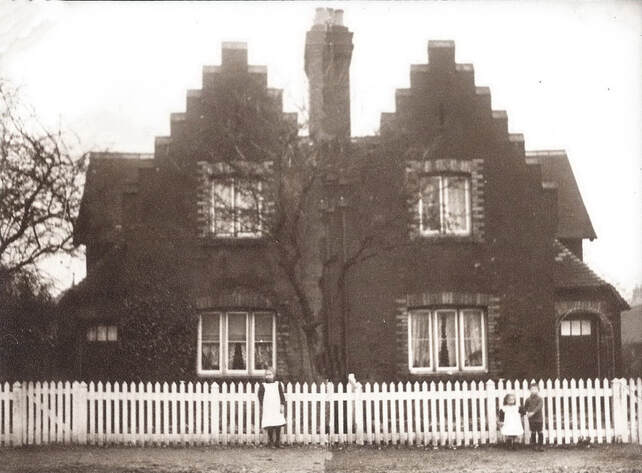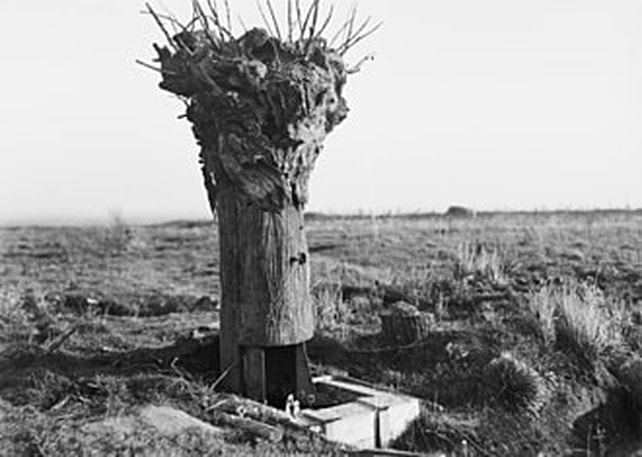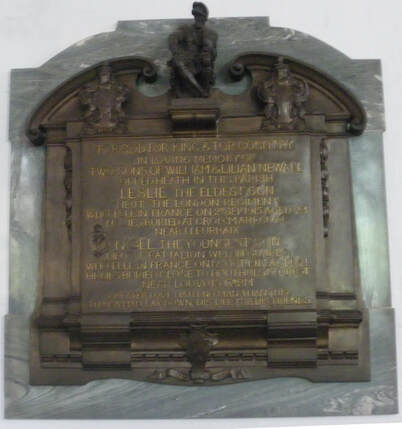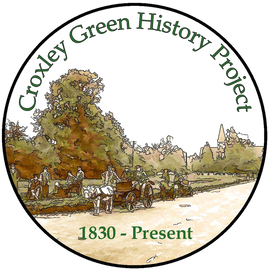Edward John Graver 1881-1969
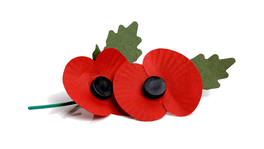
T/392955 6th 20th 23rd Battalion Middlesex Regiment
Edward was born in Grimston, Norfolk, to parents Henry and Mary Ann Graver who were also were born in Norfolk, in the district of Kings Lynn. Henry Graver was employed as a baker but the family moved to North Wooton and the 1891 census shows his employment had changed to that of a Groom/Gardener.
According to the 1901 census, Edward, aged twenty, had moved to Hertfordshire and was employed as a footman at Redheath, Sarratt Lane, Croxley Green.
Redheath and was a large country house, the home of William and Lilian Newall, their three sons Leslie, Keith and Nigel, and two daughters Gywneth and Doreen. Eleven servants are also listed in 1901, including Edward. The staff consisted of a governess, two children’s nurses, a lady’s maid, two house maids, a cook, two scullery maids, a footman and a page. William Newall’s profession is listed as a Stock Broker.
Edward was born in Grimston, Norfolk, to parents Henry and Mary Ann Graver who were also were born in Norfolk, in the district of Kings Lynn. Henry Graver was employed as a baker but the family moved to North Wooton and the 1891 census shows his employment had changed to that of a Groom/Gardener.
According to the 1901 census, Edward, aged twenty, had moved to Hertfordshire and was employed as a footman at Redheath, Sarratt Lane, Croxley Green.
Redheath and was a large country house, the home of William and Lilian Newall, their three sons Leslie, Keith and Nigel, and two daughters Gywneth and Doreen. Eleven servants are also listed in 1901, including Edward. The staff consisted of a governess, two children’s nurses, a lady’s maid, two house maids, a cook, two scullery maids, a footman and a page. William Newall’s profession is listed as a Stock Broker.
At some point between 1901 and 1909 Lizzie Waterton, from Bourne End near Hemel Hempstead, came to work at Redheath as a parlour maid. There she met Edward. They were married on the 2nd June 1909. Edward was 30 years old and Lizzie 31. The 1911 census confirms the couple were living in a cottage called Claudian on Scots Hill, and Edward had been promoted to the position of butler. Edward and Lizzie had a son Percival Edward, born 28th July 1910 and a daughter Grace Millicent born 28th July 1912. The family moved to a semi-detached cottage on The Green in about 1914.
When the United Kingdom joined the conflict in Europe in 1914 against Germany the battles were so intense there were considerable losses of thousands of young British men in France and Belgium. The Government decided there was an urgent need for conscription and this began in early 1916. At the same time the upper age range of enlistment increased to 41years. Edward was in this category and received his call up papers.
Edward was thirty five years and eleven months old when he reported for enlistment in December 1916 in Watford. His form states he was 5ft 4½" tall. He was initially posted to Woolwich Arsenal, No 4 Royal Field Artillery Depot, for training with the 19th Battery R, Royal Field Artillery as a driver, Army No 180358. However, his efforts when learning to drive the army vehicles were not successful. In January 1917 Edward requested a transfer to the Infantry. He was posted on the 4th May 1917 to a Base depot for training. He was initially assigned to the 6th Battalion Middlesex Regiment, later moving to the 20th and then the 23rd Regiment before being sent to France where he joined the Battalion on 22nd May 1917.
Soon after arriving in Western Flanders, Edward was involved in the Battle of Messines, (7-14th June 1917). Messines (now Mesen), a small village south of Ypres where the Messines Ridge had been captured by the German army in 1914, was now a strategic point and occupied on three sides by the German army. However, in early 1916 plans were put in place by the British army to create tunnels under the ridge in an attempt to regain this area.
Professional tunnelling companies of the Royal Engineers Corps. were drafted in to do this. The British Army also enlisted approximately 25,000 trained tunnellers, mostly volunteers taken from coal mining communities. Miners were used to working deep underground and used to spending time crouching for long periods. They were mainly acting as 'beasts of burden', removing the spoil from the tunnels. Nineteen tunnels were dug in total, extending under the German lines, in which one million pounds of high explosives were laid.
At 3.10 am on the 7th July 1917 British engineers detonated these explosives, each one creating huge craters. This action was the equivalent of a small earthquake and could be heard in London 130 miles away. Approximately 10,000 German soldiers were killed immediately. A combined force of British, Irish, Canadian, Australian and New Zealand soldiers were involved in the battle that followed.
The combined forces suffered fewer casualties than the German army but unfortunately Edward was wounded in the foot and lower leg on the first day. His records mention a wound to the left foot and his tibia, and numbness to his leg caused by a bullet and shrapnel.
Edward was thirty five years and eleven months old when he reported for enlistment in December 1916 in Watford. His form states he was 5ft 4½" tall. He was initially posted to Woolwich Arsenal, No 4 Royal Field Artillery Depot, for training with the 19th Battery R, Royal Field Artillery as a driver, Army No 180358. However, his efforts when learning to drive the army vehicles were not successful. In January 1917 Edward requested a transfer to the Infantry. He was posted on the 4th May 1917 to a Base depot for training. He was initially assigned to the 6th Battalion Middlesex Regiment, later moving to the 20th and then the 23rd Regiment before being sent to France where he joined the Battalion on 22nd May 1917.
Soon after arriving in Western Flanders, Edward was involved in the Battle of Messines, (7-14th June 1917). Messines (now Mesen), a small village south of Ypres where the Messines Ridge had been captured by the German army in 1914, was now a strategic point and occupied on three sides by the German army. However, in early 1916 plans were put in place by the British army to create tunnels under the ridge in an attempt to regain this area.
Professional tunnelling companies of the Royal Engineers Corps. were drafted in to do this. The British Army also enlisted approximately 25,000 trained tunnellers, mostly volunteers taken from coal mining communities. Miners were used to working deep underground and used to spending time crouching for long periods. They were mainly acting as 'beasts of burden', removing the spoil from the tunnels. Nineteen tunnels were dug in total, extending under the German lines, in which one million pounds of high explosives were laid.
At 3.10 am on the 7th July 1917 British engineers detonated these explosives, each one creating huge craters. This action was the equivalent of a small earthquake and could be heard in London 130 miles away. Approximately 10,000 German soldiers were killed immediately. A combined force of British, Irish, Canadian, Australian and New Zealand soldiers were involved in the battle that followed.
The combined forces suffered fewer casualties than the German army but unfortunately Edward was wounded in the foot and lower leg on the first day. His records mention a wound to the left foot and his tibia, and numbness to his leg caused by a bullet and shrapnel.
This British victory at the Messines Ridge helped to ensure the success of the next planned encounters with the German army, the Battle of Passchendaele and a third battle to regain Ypres.
Casualties, including Edward, that needed extra attention were sent back to England. He received some initial treatment at the Military Hospital, Old Park, Canterbury between 10th-21st June before leaving for Fort Pitt Military Hospital, Chatham. He was then transferred to Sheerness Military Hospital.
On his recovery Edward was transferred to assist with the Royal Army Service Corps (R.A.S.C.)
During the First World War the R.A.S.C. were responsible for and operated the transport systems that delivered ammunition, food and equipment to the Front Line. Where possible they used motor vehicles, the railways and waterways as part of a complex supply line from Britain to the various troop locations. It is thought Edward would have been involved in loading and unloading these stores and equipment.
The German army eventually capitulated and surrendered on the 18th November 1918. Edward returned home in early 1919 and continued his employment at Redheath.
Sadly, William Newell lost two of his sons during the conflict. Leslie, a 2nd Lieutenant London Regiment, Royal Fusiliers 1915, is buried in Rue-David, Military Cemetary Fleurbaux, Pas de Calais. Nigel, a 2nd Lieutenant, 1st Battalion, Welsh Guards 1917, is remembered on the Tyne Cot Memorial, France. They are also both remembered with a memorial plaque in All Saints Church.
Casualties, including Edward, that needed extra attention were sent back to England. He received some initial treatment at the Military Hospital, Old Park, Canterbury between 10th-21st June before leaving for Fort Pitt Military Hospital, Chatham. He was then transferred to Sheerness Military Hospital.
On his recovery Edward was transferred to assist with the Royal Army Service Corps (R.A.S.C.)
During the First World War the R.A.S.C. were responsible for and operated the transport systems that delivered ammunition, food and equipment to the Front Line. Where possible they used motor vehicles, the railways and waterways as part of a complex supply line from Britain to the various troop locations. It is thought Edward would have been involved in loading and unloading these stores and equipment.
The German army eventually capitulated and surrendered on the 18th November 1918. Edward returned home in early 1919 and continued his employment at Redheath.
Sadly, William Newell lost two of his sons during the conflict. Leslie, a 2nd Lieutenant London Regiment, Royal Fusiliers 1915, is buried in Rue-David, Military Cemetary Fleurbaux, Pas de Calais. Nigel, a 2nd Lieutenant, 1st Battalion, Welsh Guards 1917, is remembered on the Tyne Cot Memorial, France. They are also both remembered with a memorial plaque in All Saints Church.
Following the death of her husband William, Lilian Newell decided to sell Redheath and moved away from Croxley Green with her two daughters c1922. Edward was then engaged as a butler for Mr & Mrs Adams at Elmcote, The Green, just across the road from where his family lived. When the Fox Hunting Meet took place at Elmcote, Edward was responsible for handing out the ‘stirrup cups’ (usually Port or Sherry) before The Master blew the horn to begin the hunt, with the men in scarlet jackets and the hounds moving off up the Green in the hope of finding a fox in the nearby woods and fields.
A stirrup cup is a "parting cup" given to guests, especially when they are leaving and have their feet in the stirrups.
When Mr & Mrs Adams sold Elmcote and moved to Camberley, Surrey, Edward and Lizzie also moved to Surrey and Edward continued to be employed by them. Lizzie passed away in 1955 age 75yrs, the death is recorded in the Surrey register. Edward passed away in 1969 age 88yrs and he is recorded in the Watford register.
Edward and Lizzie’s son Percival (Percy) went on to become one of the earliest Ranger Scouts in the local Scouting Movement. He was a Woodwork teacher at Durrants Senior School and set up a sailing club at the Rickmansworth Aquadrome. He and his students built three boats all named after birds. Percy served in the RAF in WW2. He married Vera M Harvey, a teacher for many years at Yorke Road Infants School.
His sister Grace joined the Girl Guides in 1923 and later was ‘Brown Owl’ for six years. She married Leslie G Brown in 1933 and purchased her parents house on The Green when they moved to Camberley, Surrey with Mr & Mrs Adams.
A stirrup cup is a "parting cup" given to guests, especially when they are leaving and have their feet in the stirrups.
When Mr & Mrs Adams sold Elmcote and moved to Camberley, Surrey, Edward and Lizzie also moved to Surrey and Edward continued to be employed by them. Lizzie passed away in 1955 age 75yrs, the death is recorded in the Surrey register. Edward passed away in 1969 age 88yrs and he is recorded in the Watford register.
Edward and Lizzie’s son Percival (Percy) went on to become one of the earliest Ranger Scouts in the local Scouting Movement. He was a Woodwork teacher at Durrants Senior School and set up a sailing club at the Rickmansworth Aquadrome. He and his students built three boats all named after birds. Percy served in the RAF in WW2. He married Vera M Harvey, a teacher for many years at Yorke Road Infants School.
His sister Grace joined the Girl Guides in 1923 and later was ‘Brown Owl’ for six years. She married Leslie G Brown in 1933 and purchased her parents house on The Green when they moved to Camberley, Surrey with Mr & Mrs Adams.
